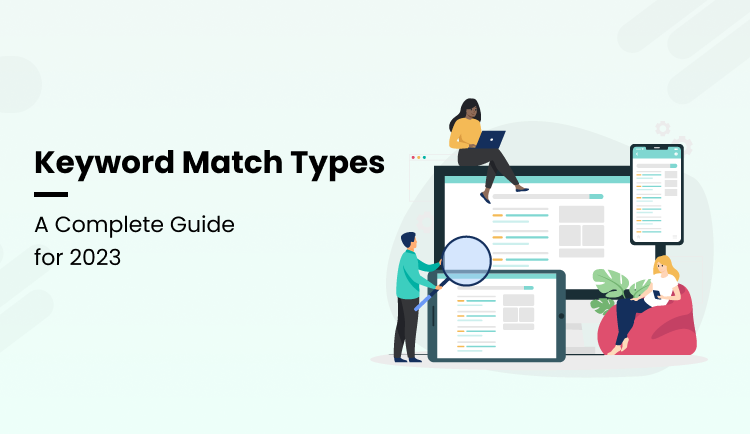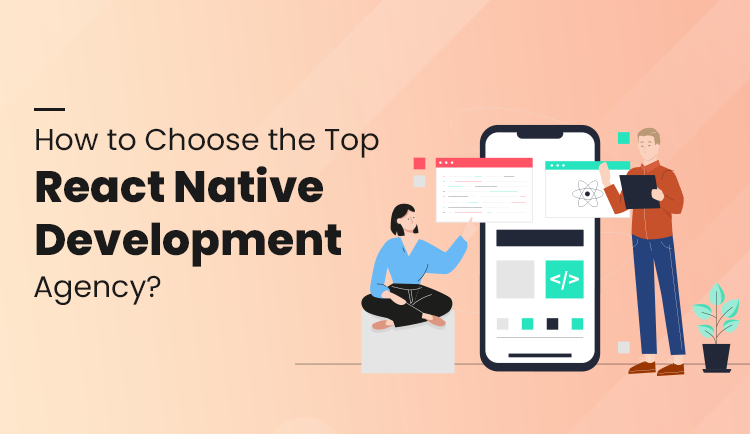
Cloud Application Development: Things to Need to Know About
The need for services provided by the Cloud has skyrocketed in recent years. This, in turn, has led to the increased demand for cloud application development. More and more businesses are now opting for cloud-based apps and services.
However, many people don’t understand how Cloud apps work. That’s why we chose to discuss the same with you and clear all your doubts regarding cloud application development.
Read this article if you’re interested in learning about cloud app development and how it can help your business grow. In this article, we walk you through everything that you need to know about cloud-based applications.
Let’s dive in…
What is a “Cloud-Based Application”?
Cloud-based application, often known as Cloud apps, as the name says, is the application that runs on the Cloud. A cloud app is one that makes use of services that are hosted in the Cloud.
Therefore, regardless of whether an application is mobile or web-based, it most likely makes use of a Cloud service. The degree to which a cloud application takes advantage of cloud services is the primary factor that sets it apart from a native application.
In cloud-based apps, a user interacts via a web or mobile browser. To comprehend this in further depth, consider the following:
The data processing, in this case, occurs on the distant server bae and is administered via an API. In the cloud application, the user’s device functions just as an input device and does not interfere with the main operation.
A cloud-based application is distinct from a web application. It is vital to analyze a few components of cloud application development in order to comprehend its distinctive characteristics.
- User data for an app may be partially cached locally on their device and also stored in the Cloud. For the app to function, users’ devices must meet certain specifications.
- A user’s device can temporarily store data so they can access it even when they don’t have an internet connection. When they reconnect to the internet, the app will automatically update itself and save any data created while offline in the Cloud.
- You can access a cloud app from your computer, tablet, or smartphone so long as it has an internet connection. The user experience is uniform and independent of browser capabilities across all devices.
- Users can schedule backups, encrypt their data, optimize and compress their data, and more.
- Cloud-based apps are more malleable than web-based apps and give consumers access to third-party cloud services through API connection.
There are three distinct kinds of clouds:
- Private cloud
- Public cloud
- Hybrid cloud
A private cloud is highly protected and intended for usage within an organization, while a public cloud is accessible to anybody on the internet, and a hybrid cloud is a combination of both.
The manner in which cloud applications are used can vary depending on the user’s perspective. Applications that run in the Cloud could make use of a browser (HTML), an application that runs in the browser (JavaScript), or a native program (works with API and is the most stable).
Architecture of Cloud Based Application
Cloud application development demands excellent knowledge of data architecture. As said earlier, there is a distinction between traditional web development and cloud-based application development—the latter functions as a collection of services that are all connected to one another (APIs).

Therefore, you need to consider how to get the most out of cloud services by connecting them, and you also need to be aware of the many kinds of components that you have.
The organization of the data is the second item that you need to be mindful of. The architecture of the application ought to supply cloud servers with instructions regarding how to decouple the data.
If you split up the components of the application, you’ll be able to store them wherever you like, whether on a public or a private cloud. This will make your company more adaptable and provide you with the opportunity to improve the performance of your website.
The rate at which your app loads is directly proportional to the physical distance between your servers and the locations of your customers.
Thirdly, designing a communication logic that will be used by your app to connect its data and its services is also crucial.
The majority of your app’s components ought to connect with one another in real time. If this procedure is not adequately developed, it will impact the user experience tremendously.
Once you have optimized the communication chains, you can choose to use either single-channel streaming or system message grouping.
The next step, to avoid more confusion, is to prepare for future opportunities for scaling. Therefore, plan for future traffic growth and include some extra headroom in your operational channels.
Create a working model that can aid users of back-end components and the storage server even in the most taxing situations.
Lastly, think of developing algorithms for security. Different industries, such as education, banking, healthcare, and retail, each have their own specific criteria that your tool needs to adhere to in order to be considered acceptable.
You should verify these items and think about the possible flaws of your cloud-based systems to develop safe encryption and execute a cloud identity and access management (IAM) strategy. As a result, you’ll have a safer and more affordable product.
Types of Cloud Applications
You need to have a solid understanding of the many kinds of cloud apps under your belt before you begin cloud application development. Cloud-based applications are divided into three primary categories, namely:
- SaaS (software as a service)
- PaaS (Platform as a Service)
- Iaas (Infrastructure as a Service)
1. SaaS (software as a service)
SaaS, often known as software as a service, is one of the most used cloud-based software. These cloud-based applications are hosted remotely and executed on hardware provided by a third party rather than taking place on the user’s own device.
With SaaS, you get a whole software suite from a third-party cloud service provider on a pay-as-you-go basis. It is one of the most affordable Cloud based application development methods.
It eliminates the need for pricey gear or licenses required for each software update. A cloud application development company, such as Annexlogics, takes care of all your cloud needs.
Examples: Google Drive and Google Docs.
2. PaaS (Platform as a Service)
PaaS, or platform as a service, is one of the most cost-effective cloud solutions. With a platform as a service, you have access to a full cloud-based development and deployment environment, with the tools needed to create and distribute anything from the most basic cloud-based apps to complex cloud-enabled business software.
All you need to have for this kind of cloud-based application development is the application code. PaaS providers permit you to use their hardware (including storage) and fundamental application development software (ready-made solutions).
Additionally, the software is continually updated, allowing developers to work with the most recent version available. Users can easily implement alterations to their applications, such as scaling up or completely rewriting their programs.
Example: Apache Stratos, Elastic Beanstalk, Force.com, Google App Engine, and OpenShift.
3. Iaas (Infrastructure as a Service)
Infrastructure as a Service, often known as IaaS, is a kind of cloud computing that provides on-demand, pay-as-you-go access to basic services, including processing, storage, and networking.
When you move your company’s infrastructure to an IaaS service, you may cut down on the cost of hardware, save money on data center upkeep, and get instantaneous insights into your business.
Using an IaaS service, you may easily increase or decrease your IT resources. They aid in the speedy deployment of new software and the improvement of the stability of the underlying system.
IaaS enables businesses to create a customized product without having to start from scratch when producing its fundamental components.
Examples: Amazon Web Services, Google Compute Engine, and Microsoft Azure.
Why Choose Cloud Based Application as Future Technology?
Cloud application development is in the mainstream. More and more companies now depend on cloud-based applications, and for all good reasons.
The ease with which cloud apps may be updated, tested, and deployed, Cloud based application development is going to stay for long. The advantages of using cloud app development services are manifold, including the elimination of server costs, hardware complications, and data storage concerns.
It has transformed the way organizations used to operate. Nearly 47% of firms have cited cost savings as a significant motivator for switching to the Cloud.
Benefits of Cloud Based Application
Cloud Application Development offers multitudes of benefits; some of them are as follows:
Cost Saving:
With Cloud based applications, you don’t need to spend on the pricey infrastructure, tools, etc. Eliminating costly hardware purchases and constructing a new server architecture results in substantial cost reductions. You will only be charged for the resources your cloud-based application uses.
Scalability:
Another advantage of having Cloud based applications is the scalability. Cloud application development enables businesses to scale up or down their IT requirements as needed effortlessly.
Flexibility:
Cloud computing enables greater organizational flexibility. For instance, if you require more bandwidth, a cloud-based service will be able to deliver it immediately without requiring an IT infrastructure upgrade. This increased freedom and flexibility might have a substantial impact on your company’s overall efficiency.
Security:
Your cloud service provider will handle the security of your data. You don’t have to be concerned about data theft or hacker assaults. This frees you up to focus on the core aspects of your business.
Quality:
Since you don’t need to manage the underlying infrastructure, you are free to focus your attention on your core activities. For instance, you could concentrate on improving the overall quality of the user experience.
Tech Challenges of Cloud Based Application Development
Undoubtedly, cloud application development offers numerous benefits. However, managing the growth of cloud-based solutions is not a simple task, as new obstacles are constantly arising.
Here are some of the tech challenges of Cloud based application development:
Cloud Migration
Moving old or traditional apps to the Cloud will be tough for an organization that wishes to utilize cloud computing. The process could take many hours and a lot of money to migrate to the Cloud. Moreover, organizations often have no clue how to handle skilled cloud providers.
Reliability
The core functions of any cloud software design need to be operational; otherwise, users won’t be able to take advantage of the solution you’ve created for them.
Selecting a trustworthy cloud framework for your cloud app is essential. If there is even a remote possibility that the cloud framework you’ve picked won’t be able to keep vital functions running, you shouldn’t utilize it.
Multi Cloud Infrastructure
To cut expenses, corporations have used multi-cloud solutions, in which a single company enrolls with many service providers and links them to itself.
There is a risk of data security breaches in this scenario since corporate data is shared with multiple service providers. If large enterprises are involved, this could complicate the cloud implementation process.
Security
Data security and privacy are major issues when using Cloud. As cybercrime rates rise, cloud infrastructure attacks could harm many consumers’ data.
Cloud service providers must establish robust security software, secure systems, and other security solutions to prevent security breaches and offer SLAs that safeguard data and privacy.
Downtime
Many businesses that depend on cloud services experience downtime because of unreliable internet connections. The company’s cloud services are accessible to anybody with high-speed Internet connections.
In the absence of a steady connection, you could experience sluggishness, delays, and malfunctions. To add insult to injury, this will annoy your customers, which will cut your company’s bottom line.
Wrap up…
So, there you have it: everything about cloud application development. The cloud-based applications offer numerous benefits to businesses, including cost savings, scalability, increased ROI, and so on.
However, cloud-based application development is a bit more complex than web or desktop development. It entails more things to address, such as numerous API integrations, data architecture planning, and data decoupling.
Also, you cannot be confident about your cloud service provider, including whether or not it can handle spikes in traffic, whether or not it keeps up with the latest security standards upgrades, and what kind of bandwidth constraints it has. Hence, we recommend opting for a reputable cloud application development company, such as Annexlogics.
With experience in cutting-edge fields, including cloud computing, data analytics, Artificial Intelligence, Machine Learning, augmented reality, and virtual reality, Annexlogics has established itself as a frontrunner in the mobile app development industry.
We have a team of specialists who can help you choose the right cloud deployment option (IaaS, PaaS, or SaaS) for your company. Whether you need cloud services for an on-premises data center or a third-party host, you can count on us.




